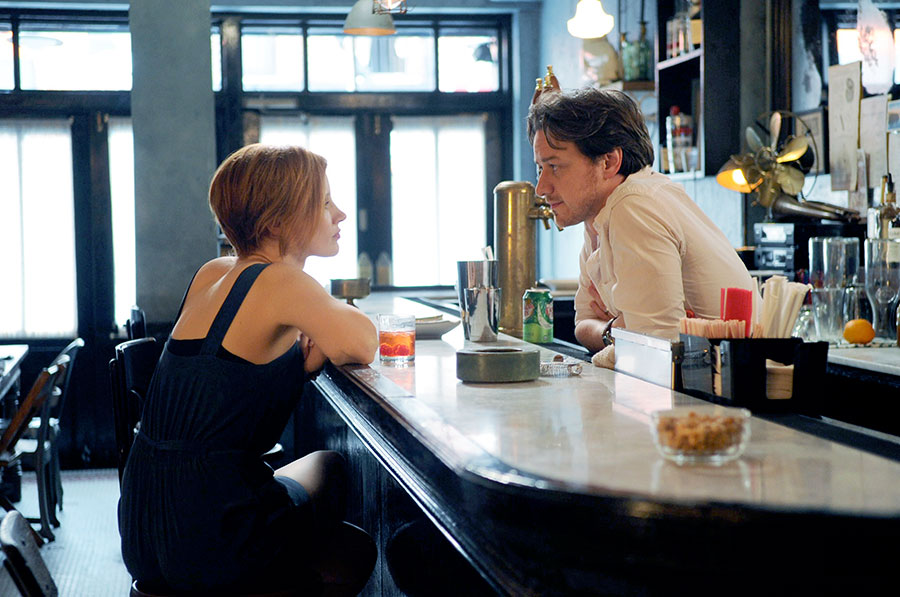Rigby mesmerizes with a pair of contrasting films
If someone were to look at the new movies coming out this weekend they might be confused to see The Disappearance of Eleanor Rigby sitting amongst the new releases. They would rightly wonder why a movie that was released weeks before to tepid critical reaction is suddenly sitting pretty in the “opening this week” section of Rotten Tomatoes.

Let’s try this again · Originally released as one condensed film, the release of the original cut of two consecutive films brings out a far superior film that succeeds in every place where the original failed. – Photo courtesy of The Weinstein Company
It’s confusing, but this is not the same movie, and this newly released version is the far superior version of the two. This weekend, The Disappearance of Eleanor Rigby: Her/Him is being released. It is a full hour and 20 minutes longer than the previously released The Disappearance of Eleanor Rigby: Them. It is, in fact, two films played in succession telling the same story first from the perspective of “her,” Jessica Chastain’s character, Eleanor Rigby. Then, after Her finishes, the same exact story is told through the eyes of “him,” James McAvoy’s Conor Ludlow, in Him.
This is format in which director Ned Benson originally envisioned this film. The Weinstein Company, however, cut the two films into one standalone film (Them), citing a need to make the film more concise and commercial. That version was the one that the public received first, and that Frankenstein’s monster of a film was an unsurprising disappointment. The business decision to aim for a more commercial version of such an artistically oriented film is especially disappointing because it distracts from a truly great film in Her/Him.
Her focuses on Chastain’s character, making it the superior film of the two solely due to the sheer force of her acting. Chastain’s Eleanor leaves her husband after grief over the death of their child wears their marriage down. What we see is nothing new: She clashes with her family, runs into her husband, and bonds with a wise, candid elder. It’s pretty standard life-in-crisis fare. Chastain lifts it all up, however, with her powerful yet nuanced performance. She keeps proving that she is one of the very best actors in the business with every new release. She makes a series of complex emotional situations seem completely natural.
Him focuses on McAvoy’s character. It’s a more toned-down film as he deals with her departure as well as with moving in with his father and his struggling restaurant. McAvoy’s acting is less obviously great than Chastain’s, but he still packs a solid punch. His character struggles with expressing his emotions, so his restrained performance was always going to appear less impressive than Chastain’s pyrotechnic emotional display. But McAvoy, being the talented young actor that he is, carries the film as well.
What really emerges from watching Him is the interplay between the two films. This is what elevates the combined film into uniquely fascinating territory. While watching Her, you see glimpses of McAvoy’s Conor, popping up intermittently in the story. His actions are understood through the perspective of Eleanor. But, once you see the same scenes through his eyes, the two films develop into a Rashomon-esque study on the effect a different point of view can have on a story. The effect created by watching two entire films that dovetail into one another like this just could not be recreated in one combined film. Them tried to recreate this as best it could, but the overlapping scenes lacked the sheer wealth of context that having an entire stand-alone movie surrounding them can bring. What appears to be selfish on the part of Conor when seen through Eleanor’s eyes is much more justified when seen through his. Offhand comments about events that happened off screen are seen first-hand and woven into the story. Things that Eleanor does in her storyline that seem perfectly reasonable from her point of view, when seen again in Him, are perceived as irrational and hurtful. The importance of the plot of the film shrinks as these effects become more and more interesting.
Though most of the layers in the story are revealed when off-camera events in one point of view are shown or explained through distinct eyes, the overlapping scenes are handled beautifully as well. At face value they seem to be the same exact scenes, and if one wasn’t paying close attention, they’d miss a bevy of small differences. Some scenes are shot from slightly changed angles or acted slightly differently or lines of dialogue are delivered in a slightly modified way or, in one very important case, delivered by the other character. Though much more subtle, these differences recall the variations in memory that Rashomon examined so well. Eleanor and Conor remember the moments they spent together in contrasting ways and that further colors their perceptions of everything else that happens.
It’s not often that a movie can be favorably compared to Rashomon, one of the greatest films of all time, but the examinations that Her/Him are able to create with their interlocking films manages to approach those heights. Of course, the genius of Akira Kurosawa allowed him to make his point in a lean, impeccably directed 88 minutes where writer/director Ned Benson needed 201, but the fact that he’s even in that conversation is very high praise. The expanded, original version of the film is the only version that should have existed in the first place and is worth all three hours and 20 minutes a viewer needs to invest to enjoy it.

